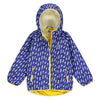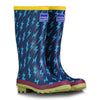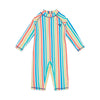
KS2 Numeracy - Plotting Rainfall
Learning Objective - KS2 Numeracy
Statistics
Interpret and construct pie charts and line graphs and use these to solve problems
Calculate and interpret the mean as an average
Resources
5 Clear 2-litre bottle with labels removed.
Ruler, scissors, and a permanent fine-tip marker, 5 x trowels
Laminated paper, whiteboard markers
Clingfilm
Introduction
Discuss with the class about rainfall in their area, ask them to estimate how much rainfall or precipitation the area they live in has per month in centimetres. Look at weather charts online together and show how the rainfall is plotted per month. Discuss how to work out the mean and model this using the coming weekly forecast.
Explain the children are going to test the prediction with an experiment to accurately measure rainfall in their school area and see how this relates to the forecast.
Put the class in to 5 groups.
Cut the top of the bottle off with a knife or scissors, assist the children with this if needed.
Now align a ruler so the end of the ruler is at the bottom of the bottle and make small marks with the marker up the side of the bottle where centimetre lines are.
Now take the top of the bottle and place the spout upside down inside the bottle.
Activity
Head outside and find the ideal spot to place your rain gauge (away from trees, etc). Dig a shallow hole and secure the bottle inside it.
Create a Daily Rain Record with the laminated paper and white board markers, with the date on the bottom axis, the measurement of rain on the vertical axis, and a description box under each date – mist, drizzle, sprinkle, shower, downpour.
Each day for a week, plot the amount our rain gauge catches by drawing a dot on the line. Then check all the boxes that apply to the type of rainfall (e.g. mist, downpour, shower). When the class has five days of data, ask them to draw lines between the dots, total the rainfall, and find the average by dividing the total by five.
Extension
Mark the predicted rain fall amounts on to their charts, and compare the differences.









